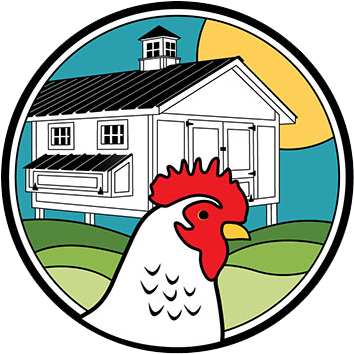As a longtime chicken keeper and pest control professional, I never thought I’d face a mite infestation in our Carolina Coop — but here we are. Roost mites can be a serious problem for backyard flocks, and I want to share my experience tackling them head-on, pesticide-free, with practical, integrated pest management strategies. If you keep chickens, understanding how to identify and manage mites early can save your birds from discomfort, illness, or worse.
Understanding the Problems with Roost Mites
Did you know that just one poultry mite can multiply to over 500,000 mites in as little as nine weeks? These tiny pests don’t just irritate your chickens; if left untreated, they can seriously harm or even kill them. Roost mites are similar to bed bugs in behavior. They feed on your chickens at night when the birds are roosting or broody, and then hide in cracks and crevices during the day.
This is why it’s so important to catch them early and take a systematic approach to pest management. In my experience, integrated pest management (IPM) is the best way to go. That means not just bombing your coop with pesticides, but combining identification, mechanical removal, environmental modifications, and safe treatments to get ahead of the problem.
Step 1: Identification Is Key
The very first thing you should do when you suspect a pest problem is to positively identify the culprit. In my case, I noticed dirty eggs in the nesting box and, upon closer inspection, found mites crawling on the eggs and in the cracks around the coop. Using a camera with a good zoom, I confirmed these were indeed roost mites.
Keep in mind that roost mites are most active during warm weather, especially when temperatures rise into the mid-80s or higher. They tend to scatter into hiding spots during the day, so you’ll want to check all crevices, cracks, and nesting materials carefully.

Step 2: Mechanical Control - Removing Infested Materials
One of the most effective first steps in managing mites is mechanical removal. This means physically taking out any infested nesting materials or bedding. In our coop, the orchard grass nesting material was a perfect hiding spot for mites, so I removed it entirely. While straw is often hollow and can harbor pests, I prefer hay or orchard grass because it’s flat and less hospitable for mites.
Removing infested materials reduces the mite population and opens up your coop for further cleaning and treatment. Ideally, you would strip the coop down to bare bones — removing all bedding, dividers, and backboards — to access every crack where mites may be hiding.
Step 3: Using Heat to Kill Mites
Instead of reaching for chemical pesticides right away, I tried something a little unconventional but very effective: using a propane torch to apply heat directly to the coop’s surfaces. The goal is to raise the temperature to at least 120°F, which kills mites and bacteria on contact.
It’s important to be cautious with this method to avoid starting a fire. Move the flame quickly and evenly over surfaces, especially wooden parts of the coop. I removed the floor and dividers of the egg hutch to expose hidden areas, then carefully torched these surfaces, killing any mites on contact./p>
Instead of reaching for chemical pesticides right away, I tried something a little unconventional but very effective: using a propane torch to apply heat directly to the coop’s surfaces. The goal is to raise the temperature to at least 120°F, which kills mites and bacteria on contact.
It’s important to be cautious with this method to avoid starting a fire. Move the flame quickly and evenly over surfaces, especially wooden parts of the coop. I removed the floor and dividers of the egg hutch to expose hidden areas, then carefully torched these surfaces, killing any mites on contact.

Step 4: Applying Diatomaceous Earth (DE) for Ongoing Control
After heat treatment, I applied food-grade diatomaceous earth (DE) to the cracks, crevices, and nesting areas. DE is a safe, natural insecticidal dust that works by dehydrating mites and other pests. It’s important to use a dust mask and avoid breathing in the powder during application.
I used a bellows duster to apply a light, even coating of DE, focusing on the underside of the coop floor and any other suspected hiding spots. DE is safe for chickens and humans, but it’s crucial to use it responsibly and avoid over-application.

Step 5: Replacing Nesting Material and Monitoring
Once the coop has been cleaned, treated with heat, and dusted with DE, it’s time to add fresh nesting material. I prefer orchard grass because it’s flat, bendy, and less likely to harbor pests than straw. Simply fluff it up and fill the nesting boxes, letting your chickens settle back in.
After treatment, keep a close eye on your flock and the coop. Early detection is essential — if you see roost mites again, repeat the process or consider additional treatments. Remember, the goal is to minimize mite populations while keeping your chickens healthy and happy.
Final Thoughts: Be Proactive and Persistent
Mite infestations can seem overwhelming, but with a systematic approach, you can protect your chickens and their home. Always start by positively identifying the pest, then combine mechanical removal, heat treatment, and safe dust like DE to get ahead of the problem.
Don’t wait until mites have taken over. Early action means less stress for your birds and less work for you. With patience and persistence, your chickens will stay healthy and productive.
As soon as you start to see some roost mites, make sure, no matter what, you get after it. Always remember to positively identify them first, and then come up with a plan on how to eradicate the mites so that your chickens can continue to live a long and healthy life.
For more tips on coop maintenance, pest control, and chicken care, visit Carolina Coops® , where you can also explore a variety of high-quality chicken coops designed with easy cleaning and pest prevention in mind.


